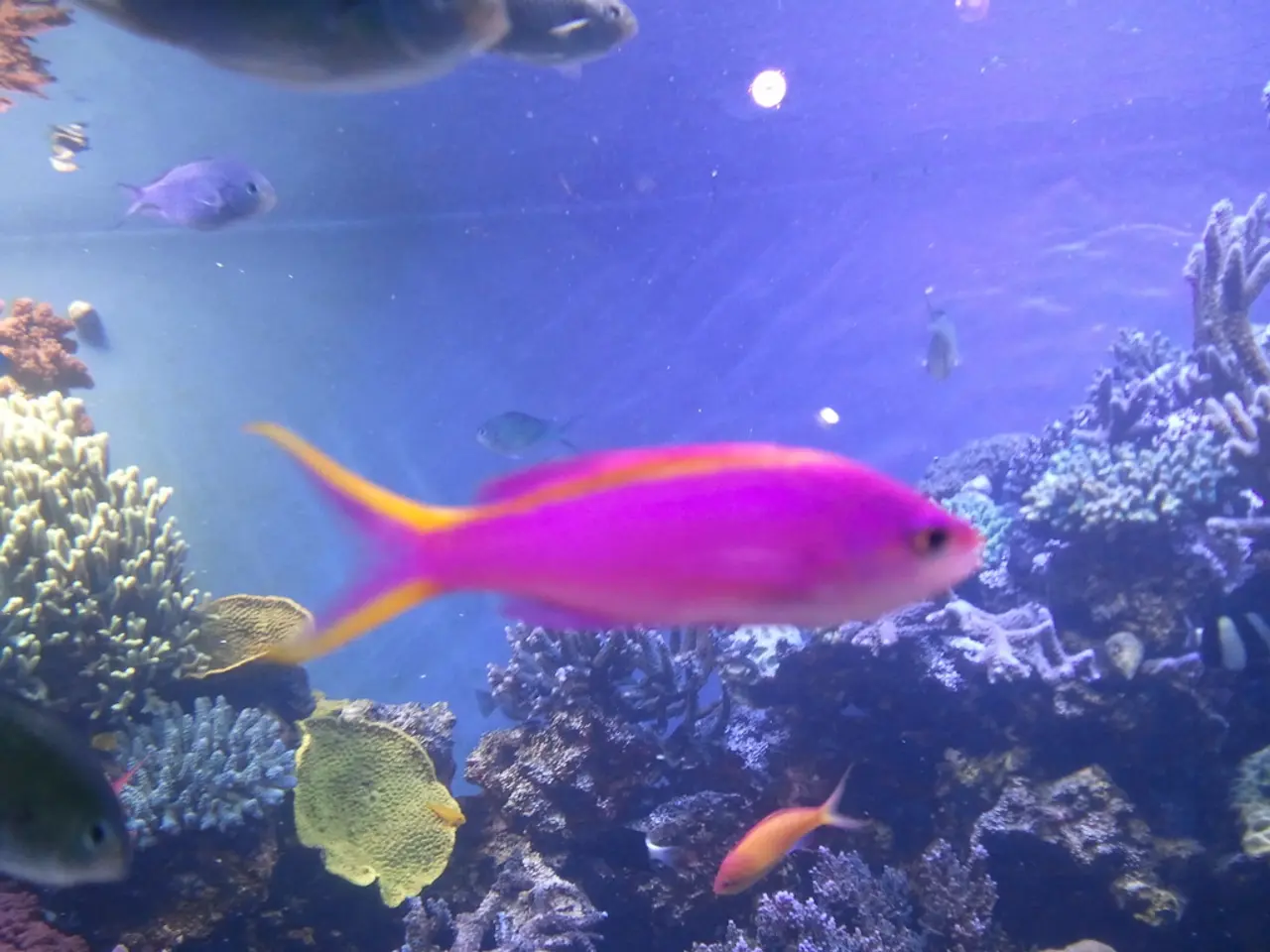Transformed Plankton Feeders within Coral Reefs: The Remarkable Evolving Species of underwater Creatures
In a groundbreaking 2025 study, researchers from the University of Rhode Island analyzed 299 species of plankton-eating reef fish across 12 fish families, revealing a remarkable diversity in both body shapes and feeding behaviours.
The study, recently published, used advanced techniques to trace long-term energy pathways and diet sources in these fish. While some species fed almost exclusively on plankton drifting in the water column, others relied on different energy sources linked to coral or macroalgae systems.
This diversity reflects adaptations to various niches in coral reef ecosystems, showing that plankton-eating fish are not a homogeneous group but exhibit a wide range of morphological and ecological specializations.
Broad morphological diversity
The study found that planktivores display more body shape diversity than any other feeding group on coral reefs. Their body shapes vary significantly to optimize capture and processing of different types and concentrations of plankton in the water column versus near benthic substrates.
Feeding behaviour specialization
Despite being classified broadly as plankton feeders, many species actually specialize in eating particular plankton groups or exploit food chains connected to coral or algae, rather than a shared generalist diet.
Ecological niche partitioning
This diversity in shape and feeding behaviour reduces direct competition among species within the same reef, supporting more complex and delicate food webs than previously assumed.
The study also found that over 75% of "non-planktivores" occasionally eat plankton, proving the strategy is innate to most reef fish. Plankton serves as a fallback food source for reef fish when algae or other food sources are scarce.
Implications for reef health
The findings overturn the traditional view that plankton-feeding reef fish are generalists with similar body forms and behaviours. Instead, they reveal a complex mosaic of evolutionary adaptations across multiple families that underpin coral reef biodiversity and ecosystem functioning.
However, reevaluating "indicator species" is necessary as no single fish shape predicts reef health. Diet switchers may outlast specialists as plankton blooms increase due to climate change.
Over 60% of studied reef fish species still rely on live coral for shelter while feeding. Protecting structural diversity (whip corals, rubble patches) is crucial to support all planktivore types.
The study also cataloged jaw-dropping outliers, such as 3cm gobies that cling to whip corals, deep-bodied damselfish that hover just inches from their home coral, and yellowmask surgeonfish caught red-handed plucking plankton midwater. Fusiliers, classic streamlined schoolers, share their plankton diet with boxy angelfish, eel-like blennies, and flat-headed cardinalfish.
The study also highlights the importance of monitoring microcurrents, not just water quality, as plankton highways for reef fish. Overnight feeders evolve huge light-gathering eyes, current-swept reef edge species prioritize speed, and sheltered rubble dwellers ambush prey from perches.
In conclusion, the study provides valuable insights into the complex world of plankton-eating reef fish, challenging long-held assumptions about their feeding behaviours and ecological roles. Understanding these adaptations is crucial for the conservation and management of coral reef ecosystems.
[1] Source: The study's publication in the journal "Nature Communications" (2025).
- The 2025 study published in the journal "Nature Communications" revealed a remarkable biodiversity in plankton-eating reef fish, showcasing a wide range of body shapes and feeding behaviors.
- The research used advanced techniques to trace long-term energy pathways and diet sources in these fish, finding that some species feed almost exclusively on plankton while others rely on different energy sources linked to coral or macroalgae systems.
- The diversity in shape and feeding behavior supports more complex food webs than previously assumed, reducing direct competition among species within the same reef and contributing to coral reef biodiversity and ecosystem functioning.
- The study also found that over 75% of "non-planktivores" occasionally eat plankton, proving the strategy is innate to most reef fish and serving as a fallback food source when algae or other food sources are scarce.
- As the reef's environment evolves due to climate change, it is crucial to reevaluate the traditional view of plankton-feeding reef fish as generalists and instead recognize the complex mosaic of evolutionary adaptations across multiple families.
- Protecting structural diversity, such as whip corals and rubble patches, is crucial to support all planktivore types, as over 60% of studied reef fish species still rely on live coral for shelter while feeding.
- The study also underscored the importance of monitoring microcurrents, not just water quality, as plankton highways for reef fish, as understood through the adaptations of overnight feeders, speed-prioritizing reef edge species, and sheltered rubble dwellers that ambush prey from perches.




